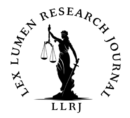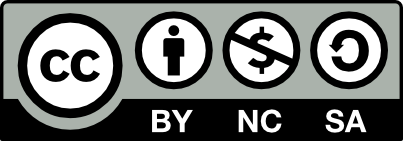Written by R.Thirushya,
Intern-Lex Lumen Research Journal,
June 2025
INTRODUCTION: UNDERSTANDING ONE NATION, ONE ELECTION
The idea of One Nation, One Election refers to synchronizing the elections for the Lok Sabha (the lower house of Parliament) and all State Legislative Assemblies in India so that they are held simultaneously, once every five years. The concept aims to streamline the electoral process, reduce costs, and enhance administrative efficiency. Originally, this system was in practice during the initial years post-Independence but gradually eroded due to the early dissolution of certain state assemblies and political instability at the center.
Prime Minister Narendra Modi has been a strong advocate of this idea, reiterating that multiple elections across the country create a continuous election cycle that disrupts governance. The Law Commission of India, NITI Aayog, and several former Election Commissioners have also proposed frameworks and reports evaluating its feasibility. However, while the idea may promise efficiency, it also invites constitutional, federal, and logistical concerns that must be carefully addressed.
HISTORICAL BACKGROUND AND THE RATIONALE BEHIND THE PROPOSAL
India held simultaneous elections in 1952, 1957, 1962, and 1967. The cycle was broken after the premature dissolution of some Legislative Assemblies and the Lok Sabha in 1971. Since then, the electoral calendar has become increasingly staggered, with elections occurring nearly every year in some part of the country.
Rationale for One Nation, One Election:
Administrative Efficiency: Conducting multiple elections involves heavy deployment of paramilitary forces, administrative staff, and the election commission’s resources. Simultaneous elections would reduce this burden considerably.
Cost Reduction: Holding elections every year results in massive expenditure. In 2019, the Election Commission of India (ECI) spent over ₹10,000 crore on the Lok Sabha elections alone.
Policy Continuity and Governance: With elections happening frequently, the Model Code of Conduct (MCC) comes into effect repeatedly, temporarily halting major policy decisions and development work.
Voter Fatigue: Continuous campaigning often leads to voter apathy and declining participation in state and local elections.
CHALLENGES AND CONSTITUTIONAL HURDLES
Despite the seeming benefits, several constitutional and practical challenges exist. According to Articles 83(2) and 172(1) of the Constitution, the tenure of Lok Sabha and State Assemblies is five years unless dissolved earlier. Any proposal for simultaneous elections must involve constitutional amendments, particularly to synchronize terms of different state assemblies with the Lok Sabha.
Legal and Structural Obstacles:
Federal Structure at Risk: India’s political structure is federal in nature, and imposing a uniform electoral schedule could be viewed as infringing on states’ autonomy.
Hung Assemblies and No-Confidence Motions: If a state government collapses before its term, how will its assembly be synchronized with the national schedule without violating democratic norms?
Logistical Complexity: Conducting elections for over 8000 assembly constituencies and 543 Lok Sabha constituencies simultaneously would require massive planning, infrastructure, and security.
According to the Law Commission’s 2018 draft report, to implement simultaneous elections, amendments to the Representation of the People Act, 1951 and constitutional provisions under Articles 83, 85, 172, and 174 would be necessary. The proposal also suggests the use of Article 356 (President’s Rule) and Article 324 for uniform scheduling – both of which are sensitive in the federal structure.
GLOBAL COMPARISON AND PRACTICAL CONSIDERATIONS
In many countries, such as South Africa and Sweden, national and local elections are held together. However, the comparison should consider India’s scale and diversity. With more than 90 crore eligible voters and a multiparty system with coalition politics, synchronization becomes exceedingly complicated.
Technological and Institutional Readiness :
Electronic Voting Machines (EVMs) and Voter Verifiable Paper Audit Trail (VVPAT) machines would need to be doubled or tripled.
Election Commission’s Preparedness: The ECI would require a major overhaul in staffing, funding, and operational capability to manage a single-day national election.
The NITI Aayog’s 2017 discussion paper also suggests that for a gradual implementation, elections in two phases can be considered: one for Lok Sabha and half of the states, and another after 2.5 years for the remaining states.
DEMOCRATIC IMPLICATIONS AND DEBATES
Argument in Favour
Proponents argue that a synchronized election would:
Strengthen National Governance by providing stable mandates.
Reduce Political Polarization, as fewer elections will mean reduced campaign rhetoric and divisive politics.
Improve Voter Awareness, as national and state issues are debated together, giving voters a broader perspective.
Counterarguments
Critics argue that:
Local Issues May Get Overshadowed: State elections would become a referendum on central leadership, undermining the importance of regional concerns.
Favoring Dominant Parties: Simultaneous elections may benefit national parties with broader organizational reach and media presence, marginalizing regional voices.
Undermining Checks and Balances: The possibility of ruling party dominance at both state and center levels may dilute the principles of checks and balances crucial in a democracy.
THE WAY FORWARD: A CALL FOR GRADUAL REFORM
Instead of rushing into an overhaul, a phased and consensus-based implementation is needed. Building political consensus, involving stakeholders like state governments, opposition parties, and constitutional experts, is critical.
Suggested Reforms:
Pilot Programs: Implement simultaneous elections in select states as a trial.
Fixed Tenure with Constructive No-Confidence Motion: To prevent premature dissolution of assemblies, India can adopt a mechanism similar to Germany’s constructive no-confidence vote, which allows a government to fall only if a new one is ready to take its place.
Judicial Review Mechanism: Establish fast-track courts to resolve election-related disputes in a time-bound manner.
Campaign Finance Reform: Tackle the core issue of election expenses not merely by scheduling, but by regulating funding and spending.
CONCLUSION: BUILDING A FUTURE-READY ELECTORAL SYSTEM
One Nation, One Election is a visionary proposal that seeks to streamline the democratic process and enhance governance. However, in a country as vast and complex as India, the reform must be cautious, inclusive, and gradual. It must uphold the federal principles, democratic freedoms, and institutional independence.
The goal should not be just efficiency, but fairness, inclusivity, and accountability in the democratic process. In the long term, if implemented judiciously, the idea could reshape India’s electoral and governance landscape for the better.
REFERENCES :
[1] Law Commission of India. (2018). Draft Working Paper on Simultaneous Elections.
[2] NITI Aayog. (2017). Discussion Paper on Simultaneous Elections.
[3] Election Commission of India. (2019). Lok Sabha General Elections Data.
[4] Palshikar, S. (2018). “Should India Hold Simultaneous Elections?” Economic and Political Weekly, Vol. 53, Issue No. 8.
[5] Austin, G. (1999). Working a Democratic Constitution: The Indian Experience. Oxford University Press.


